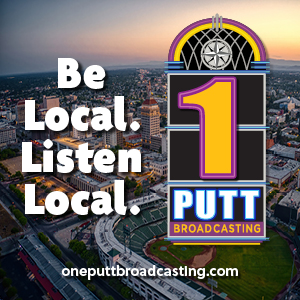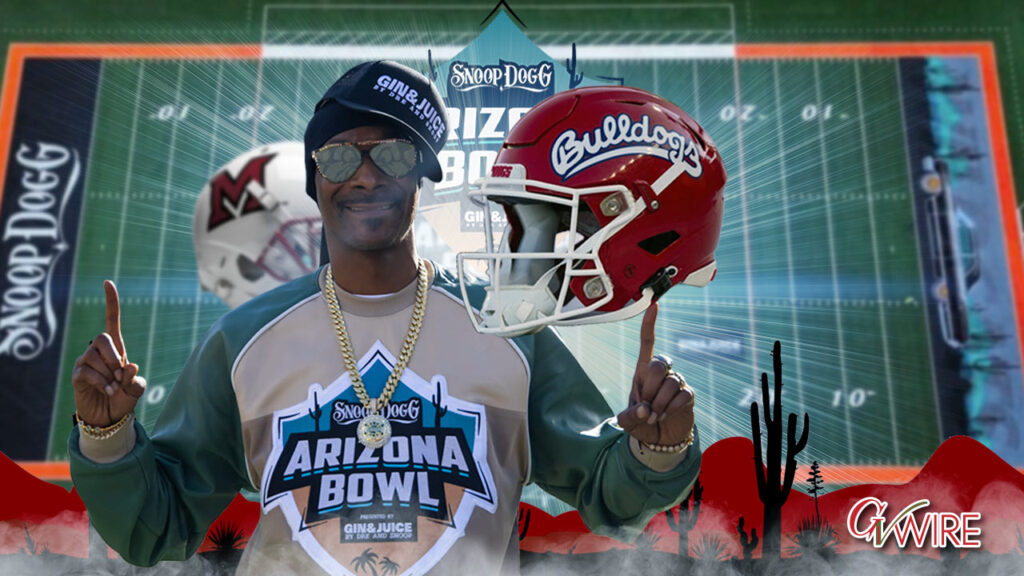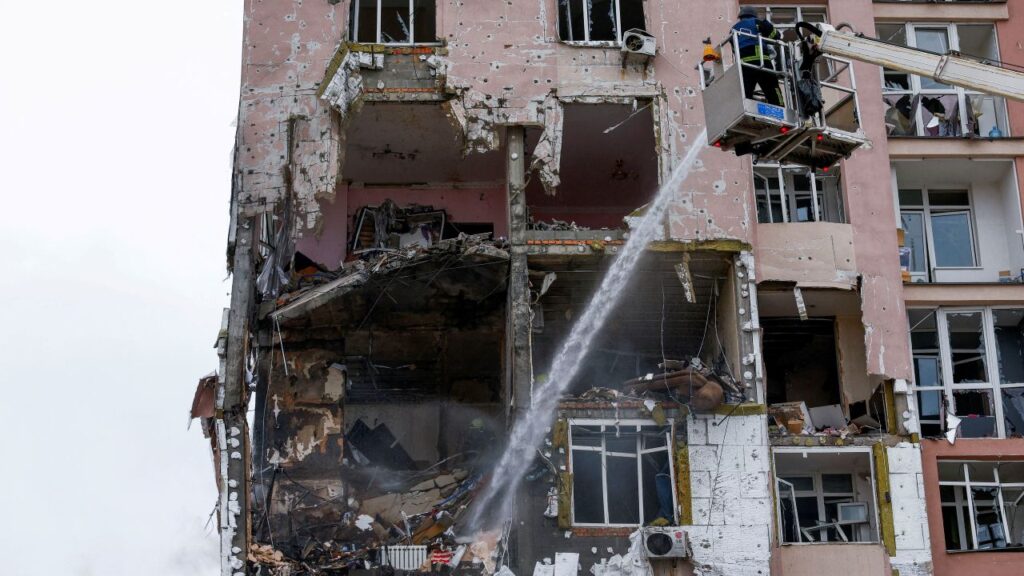Beginning with model year 2026 cars, California requires that 35% of all new auto sales be zero-emission vehicles. Most manufacturers are not close to meeting that goal. (GV Wire Composite/Paul Marshall)

- Beginning with 2026 model year cars, California will require that 35% of new auto sales be zero-emission vehicles.
- Carmakers say they will have to cut the number of gas-powered vehicles sent to the state, possibly impacting car prices.
- President Donald Trump could rescind the waiver that allows California to go above and beyond EPA rules.
Share
|
Getting your Trinity Audio player ready...
|
California’s effort to have no new gas-powered vehicles sold in the state by 2035 is beginning, and it requires 35% of all 2026 models sold this year to be zero-emission.
Dealers say they aren’t close to fulfilling the mandate for zero-emission vehicles and are nervously wondering what the future holds for themselves and car buyers.
In fact, data from the California New Car Dealers Association shows they’ve only hit 22% for zero-emission of sales —less than a percentage point increase from the previous year.
To the surprise of no one, new car dealers and manufacturers want a reprieve.
“CARB has set its own ZEV mandate that goes further than EPA regulations,” said a spokesperson for Toyota Motor North America in an email to GV Wire.
“This is going to distort the industry as companies funnel a disproportionate number of ZEVs to (California) and the states that have adopted CARB’s rules — while severely limiting choices of the vehicles consumers want.”
If California follows through with the mandate, carmakers and retailers fear the law could have far-reaching consequences for auto prices and electric vehicle availability.
Related Story: Trump Announces Sweeping New Tariffs to Promote US Manufacturing, Risking ...
President Donald Trump could rescind a waiver from former President Joe Biden that allows California and 11 other states to go beyond rules from the U.S. Environmental Protection Agency. Trump rescinded a previous waiver from former President Barack Obama.
But given California’s history of litigation against the Trump administration, any recission could likely end up in the courts.
Meanwhile, manufacturers face a potential $20,000 fine for every gas-powered car sold beyond the 65% limit.
In agreeing to Gov. Gavin Newsom’s requirements, Dodge, Jeep and Chrysler maker Stellantis said it would only send vehicles with internal combustion engines to customers who request them, according to Automotive News.
And, Toyota Motor North America said it would have to reduce the EVs in other states to have enough to sell in California.
Opponents to the rule say that either way, it will result in higher car prices.
To Dilute the Market or Contract?
Dealers will begin receiving the 2026 cars in the next three months, according to the car dealers’ association. Zero-emission vehicle adoption rates appear to be leveling out in California, making up 22% in 2024 compared to 21.7% in 2023.
Those rates, however, represent the industry as a whole.
The 35% requirement falls on each individual manufacturer to meet. The average for automakers that don’t exclusively make EVs — as Tesla does — was closer to 13%, according to the Alliance for Automotive Innovation in a December 2024 report.
If California follows through with its promised fines, automakers will have one of three choices, according to the alliance.
They can either try to sell more zero-emission vehicles, reduce the number of gas-powered vehicles, or buy credits from automakers that meet the mandate. Money doesn’t go to building out infrastructure, but rather to a handful of carmakers.

Tesla made $739 million from regulatory credits in the third quarter of 2024, the alliance reported.
Automakers could also limit how many gas-powered vehicles they send into California.
The alliance said the rule would result in fewer vehicle options and higher prices in California and the 11 other states, which are called “177 states.”
“The California/177 states are telling automakers what kind of vehicles to sell under a program that is unaccountable, unachievable regulatory wormhole,” the alliance paper states. “Participating states aren’t accountable to California and they’re not accountable to the EPA either.”
State Has 48% More Charging Ports than Refueling Pumps: Veloz
Many see the lack of charging infrastructure as a major hurdle in greater EV adoption.
The state of California paid nonprofit Veloz $2.5 million in 2022 to increase awareness about electric vehicles. Josh Boone, executive director of the nonprofit, said consumer choice has grown significantly in the past few years.
Since August 2024, California has added 26,000 chargers, bringing the total to 178,000. That means 48% more chargers than gasoline nozzles, Boone said.
However, filling a tank with gas is much quicker than charging an EV, necessitating the installation of even more chargers going forward.

In 2024, the state began requiring that 50% of parking spots at new apartment complexes, hotels, and motels be built out with EV chargers.
“California has a coordinated plan to meet the needs of EV drivers between now and 2035,” Boone said.
Boone said misinformation about charging infrastructure and vehicle availability contributes largely to consumer sentiment against electric vehicles.
“Americans understand the value and the benefits of EVS and they do buy them,” Boone said. “They just need the right education and support.”
California Has to Replace Old Chargers and Build New Ones
Even with those charger numbers, many experts don’t think access has grown enough.
Curtis Chadwick, senior manager of EV charging and site acquisition for CGO Solutions, helps connect equipment companies with property owners to get chargers installed.
He thinks it’ll take five to 10 years to get infrastructure built out enough to accommodate the influx of electric vehicles.
Investors are seeing the real-estate potential for charging infrastructure, Chadwick said. They anticipate future consolidation in the now diverse market.
But supply-side limitations exist.
Right now, getting a fast charger installed usually takes about 18 months from leasing to finish, he said.
The charging station itself might be up within 12 months, but utility companies need to get hookups, which can take several months.
What’s more, the state needs to change out much of its older stock.
Newer chargers are being built in anticipation of tech advancements in vehicles, but when chargers first started popping up, there were few standards.
Many now need new software updates. Shell is currently phasing out older chargers that require upgrades, Chadwick said.
“What’s lagging is whatever’s been put in place with EV charging on the infrastructure side, much of it needs to be replaced because there were no standards say five or 10 years ago. There’s no communication between networks.”
Tariffs Could Make Chargers More Expensive
Many chargers were also placed with little consideration for safety, Chadwick said.
Shopping center owners often wanted them in places that wouldn’t take up valuable parking spaces. Those spaces were undesirable for a reason — being poorly lit or near dumpsters, he said.
And it’s not as simple as merely placing chargers in shopping centers. The state needs a variety of chargers.
A fast charger makes sense for someone getting fast food, but a trip to the grocery store might be too long before someone gets fees for idling at the charger. Operators don’t want people at chargers longer than needed, so they add fees for when a car is full but still plugged in.
One client told Chadwick about plugging in when they went to the gym. They returned to find a $60 surcharge.
What’s more, not many shopping centers have the infrastructure to accommodate the 480 volts needed to run a fast charger.
A Level-2 charger, which runs 220 volts, may be the better solution, Chadwick said.
Getting parts might be harder with Trump’s tariffs, as well. While many chargers may be assembled in the U.S., parts come from overseas. Thus, tariffs could make chargers more expensive.
Building out EV infrastructure was a major goal of Biden.
However, in his first few days back as president, Trump threatened to rescind many Biden-era funding allocations, making uncertain many promises.
Though many states received money to build out infrastructure, spending that funding takes time.
“Some of the clients we talk to, some are optimistic that it’s going to be ‘program changed but put back on go,’ ” Chadwick said. “And then others are reluctant and just assuming that program is stopping and we have to find other ways to fund our projects.”



















